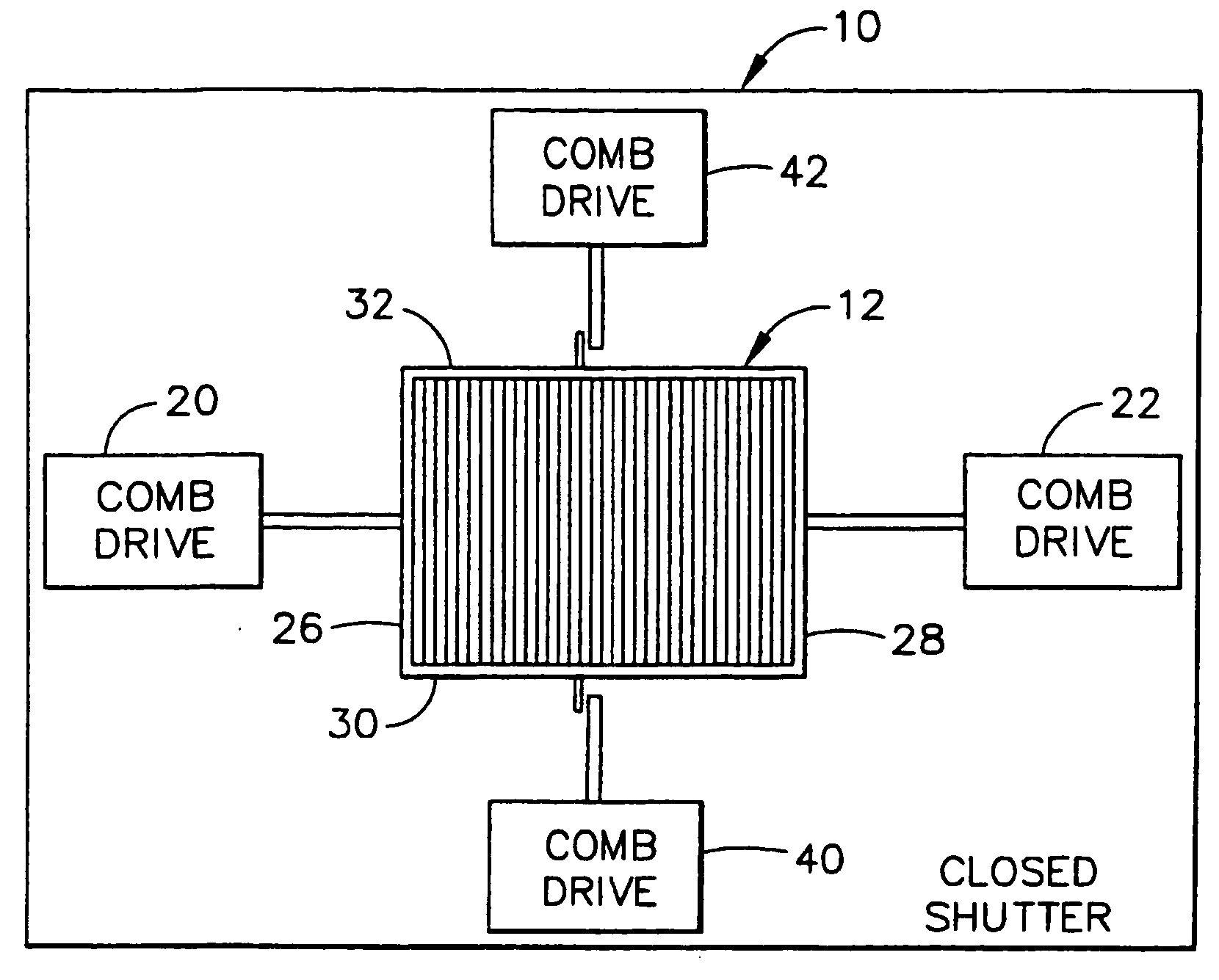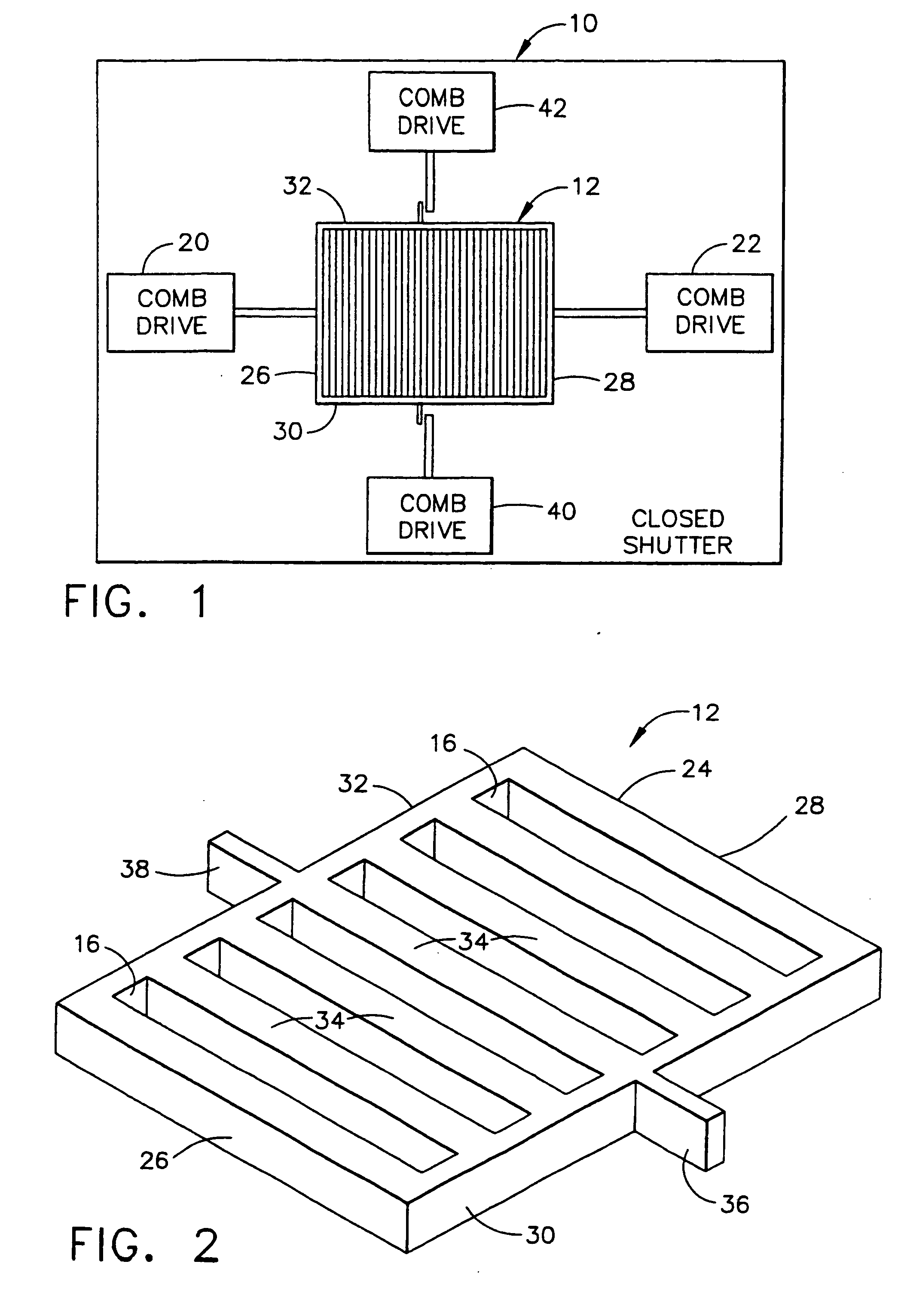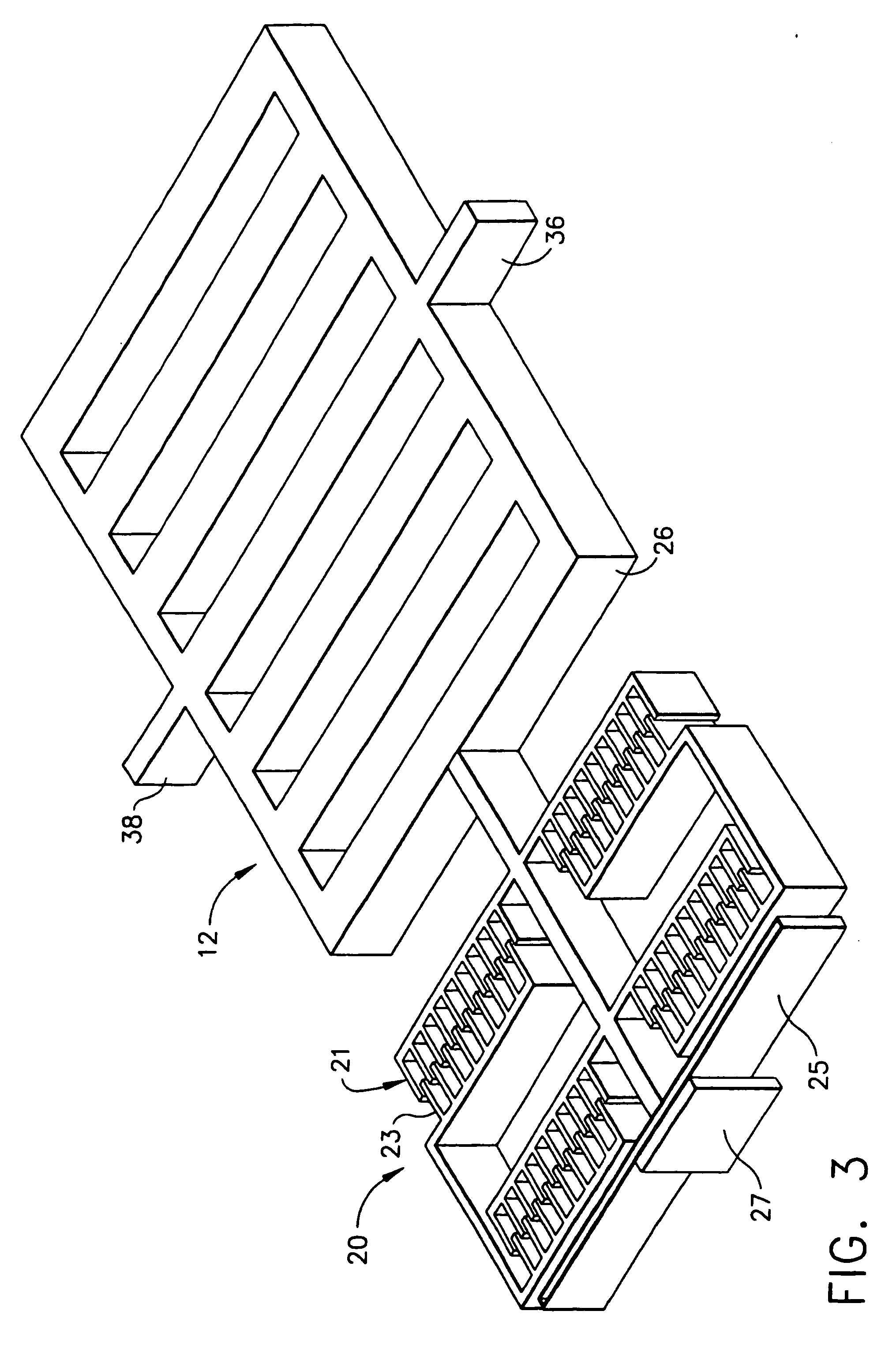Microvalve for controlling fluid flow
a micro-valve and fluid flow technology, applied in the direction of valve operating means/release devices, electrochemical generators, primary cell maintenance/servicing, etc., can solve the problems of reducing the efficiency of metal-air cells, cell failure prematurely, and undesirable power drain associated with prior-art micro-valves
- Summary
- Abstract
- Description
- Claims
- Application Information
AI Technical Summary
Benefits of technology
Problems solved by technology
Method used
Image
Examples
Embodiment Construction
[0040] A preferred embodiment of the present invention involves an electrostatically-driven MEMS microvalve designed to control fluid flow. In this application, the term “electrostatically-driven” refers to a driving mechanism created from fixed charge due to an electrostatic potential between two surfaces. This differs from a “thermally-driven” microvalve in that the thermally-driven microvalve utilizes a resistive element that provides the heat energy necessary to drive the valve. Such a resistive element either provides a parasitic drain on the cell itself or requires an alternative power source to drive the valves. Magnetic or inductive systems, by contrast, use continuous current in a loop to generate an external magnetic field which in turn creates a magnetic force. An electrostatic valve, however, utilizes the charge of the cell to drive the valve so that the parasitic drain on the cell is much less than for thermal or magnetic valves.
[0041] In the preferred embodiments, the...
PUM
 Login to View More
Login to View More Abstract
Description
Claims
Application Information
 Login to View More
Login to View More - R&D
- Intellectual Property
- Life Sciences
- Materials
- Tech Scout
- Unparalleled Data Quality
- Higher Quality Content
- 60% Fewer Hallucinations
Browse by: Latest US Patents, China's latest patents, Technical Efficacy Thesaurus, Application Domain, Technology Topic, Popular Technical Reports.
© 2025 PatSnap. All rights reserved.Legal|Privacy policy|Modern Slavery Act Transparency Statement|Sitemap|About US| Contact US: help@patsnap.com



